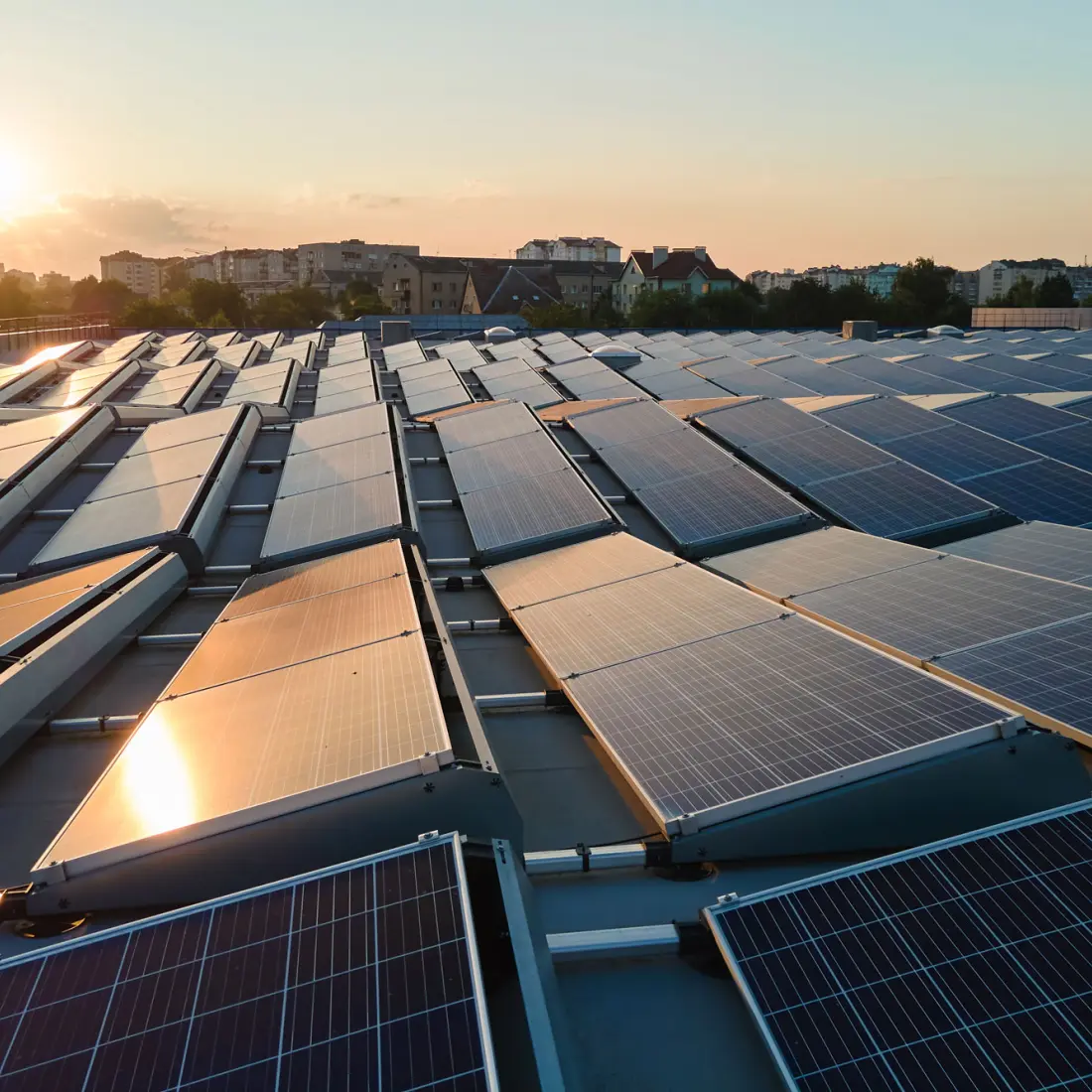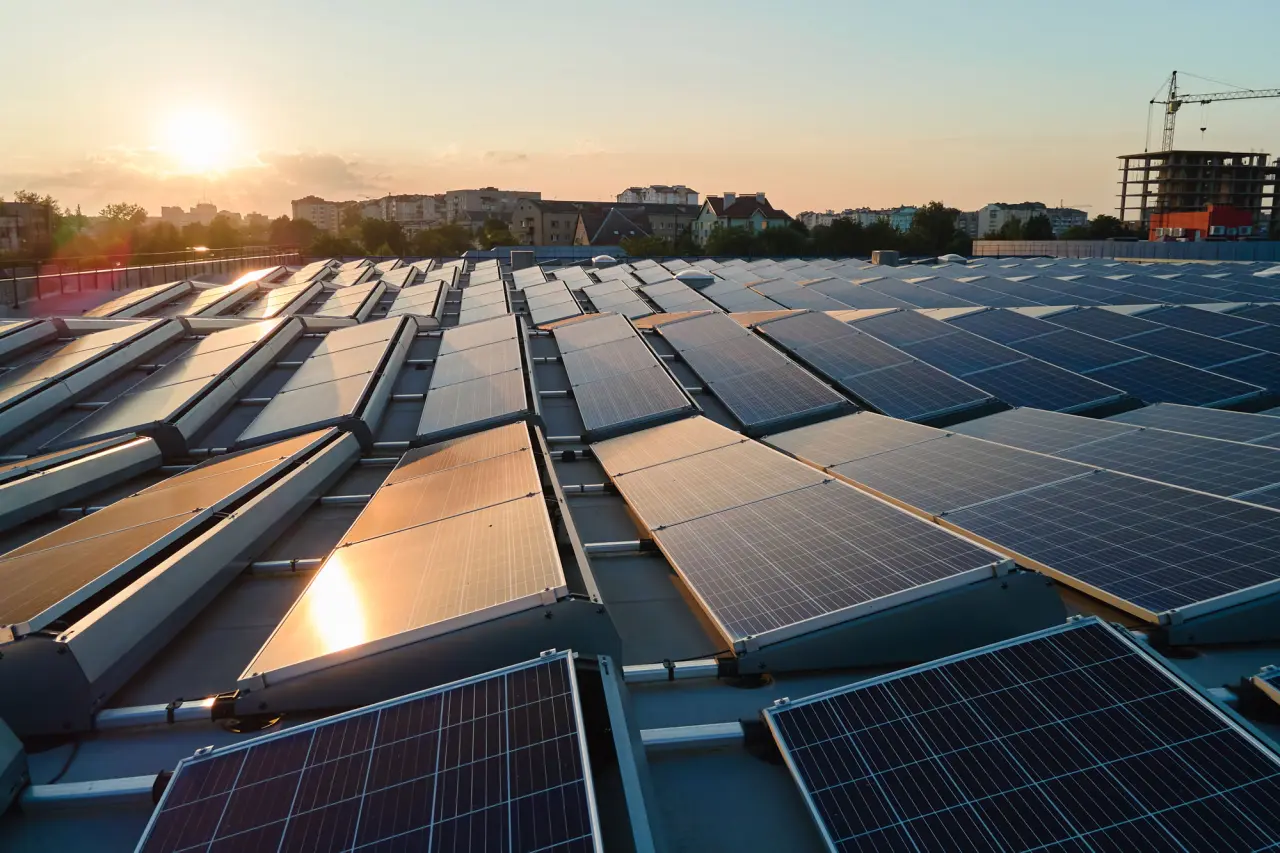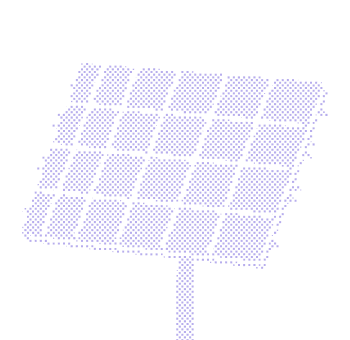How to design PV systems on complex roofs?


As the world shifts towards renewable energy, roof-mounted solar systems have become increasingly popular for both residential and commercial buildings. They gained popularity primarily due to the numerous benefits, such as reduced energy bills, lower carbon footprints, and energy independence. In urban settings, where space is often limited, using roof space for solar panels is an efficient way to generate renewable energy without occupying valuable land.
However, designing and installing PV systems on complex roofs and knowing how to mount solar panels on roofs can be challenging due to the variety of roof shapes, angles, and obstructions. The need for precise and efficient design solutions has never been more critical.
In this article, we’ll guide you through the essentials of designing solar PV systems on complex roofs. We'll cover roof complexities, site assessments, and tools, such as PVcase Roof Mount, that aid the process. Most importantly, you'll discover best practices and learn how rooftop solar design software like PVcase Roof Mount can streamline your workflow.
Understanding complex roofs
Complex roofs come in various forms, each presenting unique challenges for solar PV installation. These include:
Multi-faceted roofs: they have multiple sections at different angles and orientations. Each facet may receive varying amounts of sunlight throughout the day, requiring careful consideration to optimize solar panel placement and performance.
Steeply pitched roofs: roofs with sharp inclines can complicate panel installation, making it difficult to achieve the optimal tilt angle for maximum solar exposure. Additionally, the risk of panels slipping or detaching increases with steeper pitches.
Roofs with obstructions: many roofs feature obstacles such as chimneys, skylights, vents, and HVAC units. These obstructions can cast shadows on the panels, reducing their efficiency. Designing around these elements requires precise planning and advanced tools to ensure minimal shading and maximum energy production.
These complexities require careful planning to ensure efficient solar panel placement, maximum sun exposure, and ease of maintenance.
PVcase Roof Mount handles roof-mounted PV systems and all the challenges. It includes sophisticated algorithms and high-resolution 3D modeling capabilities that allow designers to assess and accommodate complex roofs' unique characteristics accurately. For example, with Shading Analysis, the software can simulate the impact of shading throughout the year, helping to determine the best locations for panel placement to avoid shaded areas.
Site assessment and roof analysis
Conducting a thorough site assessment is crucial for designing effective roof mount PV systems. The process involves several key steps:
Initial site visit: an initial site visit helps gather essential information about the roof structure, including its dimensions, orientation, and condition. This step is crucial for identifying potential challenges and understanding the roof’s capacity to support a solar PV system.
Roof analysis tools: using advanced tools and technologies can significantly improve the accuracy of the site assessment. For instance, drone surveys provide high-resolution aerial images and 3D models of the roof, capturing details that might be missed in a manual inspection.
Key factors to consider: several factors must be considered during the roof analysis, including:
Roof orientation and tilt: the roof's orientation and tilt angle impact the amount of sunlight the panels will receive. South-facing roofs typically receive the most sunlight in the Northern Hemisphere, while the optimal tilt angle depends on the geographic location.
Shading: identifying and analyzing shading sources is critical. PVcase Roof Mount’s Shading Analysis feature allows designers to simulate shading patterns and optimize panel placement to minimize shadowing effects.
Structural integrity: it is essential to ensure the roof can support the additional weight of the solar panels. This includes assessing the roof’s material, age, and any existing wear and tear that might affect its load-bearing capacity.
PVcase Roof Mount provides a bundle of roof analysis capabilities; therefore, solar designers can create accurate, efficient, and reliable PV system designs for complex roofs.

Customized design solution
Designing solar PV systems for complex roofs requires customized solutions that address the unique challenges of each roof type. Here are some strategies solar developers can use:
Adaptable mounting systems: flexible and adjustable mounting systems are essential for accommodating various roof angles and shapes. These systems can be tailored to fit the specific contours of the roof, ensuring secure and stable panel installation.
Maximizing sun exposure: designers can use advanced solar roof design software to model the roof and simulate solar exposure throughout the year. This helps to identify the optimal locations for panel placement, avoid shaded areas, and maximize energy production.
Microinverters and power optimizers: can improve the system performance of roofs with multiple facets and varying sun exposure. These devices allow each panel to operate independently, reducing the impact of shading on overall system efficiency.
Designing around obstructions: obstructions like chimneys, skylights, and vents can create significant shading issues.
PVcase Roof Mount features, such as 3D Modeling, Layout Generation, Shading Analysis, and even Electrical Design, enable designers to accurately map these obstructions and strategically place panels to optimize performance. Additionally, creating accessible pathways for maintenance is crucial to ensuring the system's longevity and performance.
Engineering and structural considerations
Ensuring the structural integrity and safety of mounting solar panels on roofs is paramount. Here are some key engineering and structural considerations.
Roof materials
Different roof materials require different mounting techniques. For example:
Asphalt shingles are the most common roofing material, requiring careful handling to avoid damaging the shingles during installation.
Metal roofs often allow easier installation using clamps and other non-penetrative mounting systems.
Tile roofs are more fragile and require specialized mounting systems to prevent cracking and leaks.
Weight load and wind resistance
The weight from solar panels and mounting equipment adds extra load to the roof, so it's crucial that the structure can support this without compromising its integrity. Securing the panels against wind uplift is also essential, especially in high-wind regions.
PVcase Roof Mount offers features for calculating weight loads and wind resistance, helping engineers design secure and stable installations. Its Mounting & Ballast calculation feature, based on PanelClaw's product dimensions, assists in ensuring installations meet structural and safety requirements.
Minimizing roof penetrations
Minimizing the number of roof penetrations reduces the risk of leaks. Using non-penetrative mounting systems, such as ballast systems for flat roofs, can help achieve this goal. When penetrations are necessary, it is critical to ensure they are properly sealed and waterproofed.
Economic and regulatory aspects
Installing PV systems on complex roofs can have significant cost implications. Here are some economic and regulatory considerations:
Cost implications: the complexity of the roof can increase installation costs due to the need for customized mounting systems, additional labor, and more sophisticated design tools. However, the long-term benefits of reduced energy bills and potential incentives can offset these initial costs.
Navigating regulations: local building codes and regulations play a crucial role in roof-mounted PV installations. It is important to understand and comply with these regulations to meet all legal requirements. This includes obtaining necessary permits and ensuring the system adheres to safety and performance standards.
Incentives and financial considerations: various incentives and financial programs are available to support the roof-mounted PV systems. These can include federal and state tax credits, rebates, and grants. Additionally, financing options such as solar loans and power purchase agreements (PPAs) can make solar installations more affordable for homeowners and businesses, depending on the country.
Despite initial challenges, installing PV systems on complex roofs provides substantial long-term benefits. By overcoming named obstacles, you can achieve high efficiency levels and become energy-independent. These systems allow you to capitalize on incentives and financial programs, making solar energy a viable and rewarding investment for C&I rooftops, all while reducing energy bills and driving your business toward sustainability.
Conclusion
Designing roof-mounted PV systems on complex roofs presents unique challenges, such as complicated layouts or shading issues. However, the right tools, like PVcase Roof Mount can effectively address and eliminate these challenges.
PVcase Roof Mount provides solar designers with the advanced features and capabilities needed to create optimized, reliable, and efficient PV designs for even the most complex roofs.
By leveraging its powerful features, such as 3D Modeling, Shading Analysis, Electrical Design, designers can overcome the hurdles of complex roof structures and maximize the performance and efficiency of their solar systems. Hence, with tools like PVcase Roof Mount, we can ensure that even the most challenging roof structures can be transformed into efficient, renewable energy sources.


See PVcase Roof Mount in action
Book a demo and move your commercial & industrial rooftop solar development forward with the best-in-class solution.
